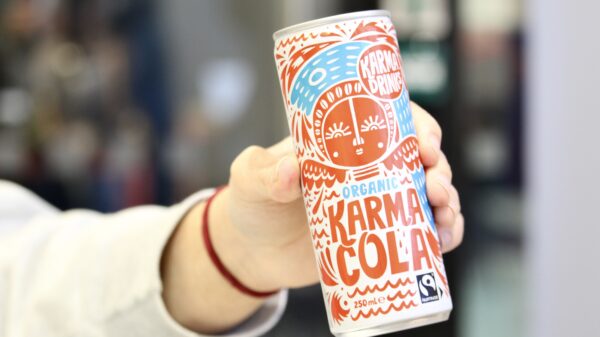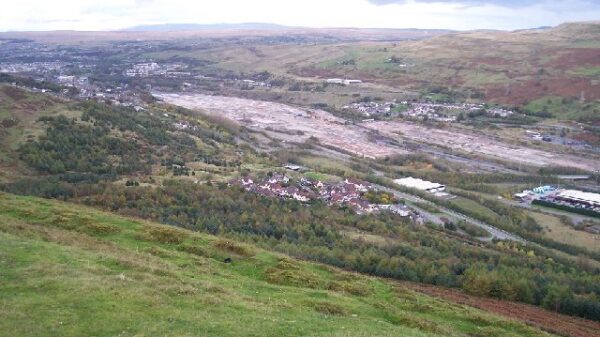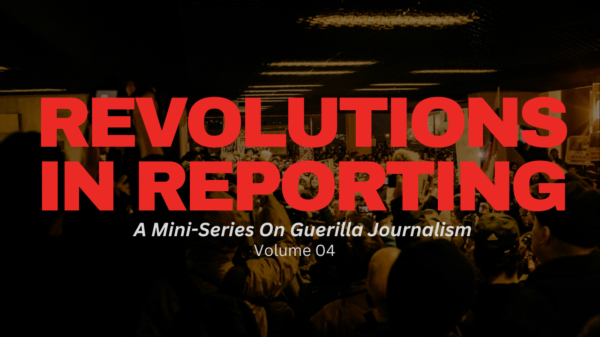Comment Editor Ruth Otim opens the mini-series project on guerrilla journalism, covering characteristics of the alternative news form.
The news stories that are not covered are just as important as the ones that are. Such intentional choices within news coverage dictate whose stories matter, what facts are relevant and their gravity within our lives. Particularly when news coverage is monopolised by large media houses, it is noteworthy to ask who will cover these topics. One answer to that question is becoming increasingly common: guerrilla journalism.
Guerrilla journalism is a journalistic practice employed by the average citizen. Guerrilla journalists take it upon themselves to often report on an issue of importance that may not be receiving considerable attention if any at all. Their insight may challenge mainstream consensus and is often done without institutional authorisation or oversight that is typical within traditional journalism. What they lack in formal journalistic practice, they make up for in their diverse perspectives. Guerrilla journalists employ a series of unique approaches to uncovering stories that can allow other citizens like them to confront what they know and understand about an issue.
What defines a guerrilla journalist also highlights the flaws of their practice. The accuracy, ulterior motives and legality of their coverage are crucial points challenging guerrilla journalism. How we pinpoint the characteristics of such alternative journalists, the goals of their coverage, the techniques employed and the ethical considerations of the journalistic style will allow us to better discuss this alternative form of journalism.
This is the first article in a mini-series covering guerrilla journalism from all perspectives – from what it is to its background, its impact on traditional media and its implications in diverse political economies.
This article, in particular, will understand two essential characteristics of guerrilla journalism: independence and social justice activism, and approach the nuances of such alternative coverage.
Independence is a hallmark of guerrilla journalism
It seems paradoxical that guerrilla journalism, arguably the most unchained and alternative form of journalism, can be confined to a list of characteristics. However, identifying key characteristics is still crucial for those who may not know too much about it and, in turn, appreciate its unique approach and impact. This begins by understanding what it truly means to be independent as a guerrilla journalist.
Independence is one of the most identifiable aspects of guerrilla journalists. They work separately and often contrary to traditional media houses. Guerrilla journalists are therefore allowed to chase any story they see fit and work outside the scope of orthodox media oversight. Their freedom enables them to tackle controversial topics without the fear of censorship from corporate sponsors and editorial boards. This journalistic autonomy also comes with financial independence. Crowdfunding and donations keep guerrilla journalists working – whether it’s on social media platforms or personal blogs.
This introduces another essential question: does their fiscal dependence on the benevolence of their viewers or sponsors not act as a new form of journalistic oversight? To answer this we have to understand the space that guerrilla journalists operate in: social media.
It is no surprise that our preferences sway algorithms and, in turn, algorithms sway our preferences. Concerning how algorithms sway our preferences, guerrilla journalists are tasked with positioning their media as favourable to their audience’s algorithms – be it the stylistic choices they make, the content they produce, or the analysis they provide to remain financially independent. The AdSense, the money social media creators make through monetized content, that they receive either through short-form content on TikTok and Instagram, to the sponsorships they gain out of Youtube, supports their work financially.
The journalistic output and revenue produced by guerrilla journalists in the swift pace that trend cycles currently operate on may instruct guerrilla journalists to further align with said algorithms – not only for the maintenance of their financial livelihoods but for the longevity of their independent work.
This is not to say, however, that guerrilla journalists are now informing a new wave of decentralised journalism that works at the behest of every one of their viewers. That would be too quick of an assumption. It is to point out that the journalistic world is a give-and-take process. What guerrilla journalists give in their unfiltered coverage, they lose in the financial security of a traditional media house. The exact same, however, can be said about traditional media. What they give in career and financial security under a large name, they take away in possibly limiting editorial control.
The sacrifices that guerrilla journalists make to cover the uncovered are often done with good intentions: the freedom of unrelenting activism.
Activist-journalism or journalist-activism
Although some may group them together, I don’t consider citizen journalism and guerrilla journalism to be entirely equal. My understanding is subject to change, but to me, what separates a citizen journalist from a guerrilla journalist, is activism. Admittedly, no activism can begin without information.
Journalists, whether we intend to or not, are one of the starting points for generating activism surrounding an injustice or issue that is not being resolved or adequately combated yet. What we often forget, however, is that what we fail to cover or cover appropriately is also an ignition point for activism. This is where guerrilla journalists’ stories are born.
Guerrilla coverage at Kensington Avenue, Philadephia
You can often find guerrilla journalists placing themselves in proximity to real issues that are not being covered enough, if at all. Informing their audience on social media or their blog posts makes their journalism a form of activism itself. Talking to real people on the ground reminds audiences that greater injustices and issues have real, detrimental effects on those that traditional media fails to report on. So, does that mean that guerrilla journalists can be considered activist-journalists – prioritising their activism before their work, or journalist-activists – becoming activists by way of their journalism? We can look at the coverage of the drug epidemic in Kensington Avenue in the city of Philadelphia, Pennsylvania in the U.S.
Using the words ‘coverage’ and ‘guerrilla journalism’ may be too much of a stretch for some of the videos posted on YouTube, but suffice it to say some YouTube channels embody many of the unfiltered, independent characteristics of guerrilla journalism. I will not specifically name the reporters or channels in this article, but I invite you to search for “Kensington Philadelphia” to make up your own mind about the social justice activism/journalism question.
The thumbnails of the videos already speak volumes. The visual messaging is a site of urban decay and desolation, combined with images of stumbling addicts across Kensington Ave, some even referring to them as zombies. Images of wounded drug users flood the YouTube feed and journalists in the foreground of thumbnails appear to be stunned at the ‘troubled urban area’ in the background.
“The drug epidemic in the United States has been ravaged by new, unknown drugs such as xylazine or its commonly used term ‘Tranq’ by addicts looking for alternatives to known substances such as meth, crack, heroin, etc. The state of Kensington Ave has become a notorious place in the US for addicts to get such novel substances and has been referred to as an “open-air drug market”
The Philadelphia Inquirer.
Activists have been pushing for greater access to drug rehabilitation centres and Naloxone – a medicine that reverses opioid overdose. Another one of their goals is to divest from the over-policing that criminalises addiction and invest in programmes to help addicts. At the most elementary level, social justice activists often stress the humanity of drug users and not the fear-inducing, dangerous image that we may often be convinced to believe. Since humanising people who struggle with addiction is at the heart of this activist movement, it also results in greater support for the abovementioned solutions.
What appears prevalent on the YouTube thumbnails of self-described journalists, however, is quite the opposite. Drug users are depicted as ‘zombie-like’, covered in bruising and wounds that make them alien to the rest of society. The trash on the floor and the images of dishevelled people on the streets, paired with flashy titles and shocking scenes may, in fact, give us a different answer to the original question altogether.
Not all independent online journalists are guerrilla activists just because they provide raw and unfiltered coverage of controversial issues. Guerrilla journalists who operate within a space between activism and journalism do not prioritise the profitability and sensation that these issues may garner on social media platforms.
How do we separate guerrilla journalists from online content creators?
Guerrilla journalists on YouTube can be identified by the intentions of their videos. Some evoke a more humane reaction to the traditionally villanised drug users whilst others offer an in-depth analysis of the situation and provide possible solutions. Recalling the original question, more often than not, we find guerrilla journalists as journalists before their activism. That is, they heavily inform themselves and work in proximity to these issues to produce new information and critical analysis. Their journalism guides their activism.
The issue, however, becomes that their work becomes lost in a cornucopia of content creators who simply know how to work the algorithm. It goes back to the way social media works; such platforms like YouTube operate off of virality and sensationalism that obstructs true journalistic integrity for the sake of clicks. Even though these YouTube journalists fit into the other characteristics of a guerrilla journalist as providing unfiltered coverage of an under-reported issue, activism is an essential part of guerrilla journalism.
Much like the term it often gets associated with – guerrilla warfare, guerrilla soldiers fight unconventionally for a specific objective. The preliminary term, guerrilla, insinuates that there is a specific objective approached by unconventional tactics. For guerrilla journalists, I’d posit that their objective is far past profiteering or sensation. By illuminating a controversial or unknown issue, they partake in a form of activism by bringing important, unfiltered information to light.
Guerrilla journalists don’t necessarily need to list every solution to the issue they are covering. They must make the first step towards activism by providing crucial information that traditional media may neglect or unfairly cover.
As a result, pinning down guerrilla journalism is a tumultuous feat. Independence and social justice activism, while being hallmarks of guerrilla journalism, are still highly nuanced themselves. Guerrilla journalists seek independence from one structure but can fall dependent on another. Social justice activism mobilises guerrilla journalists but they can be lost in a sea of other reporters seeking other motives.
Breaking down the functions of guerrilla journalism, its history, and its application within journalistic spaces is the objective of this series. As long as the work of guerrilla journalists grows prolific within our consumption of the news, knowing who they are and what they stand for increases our media literacy and opens the doors for challenging the mainstream news.


















